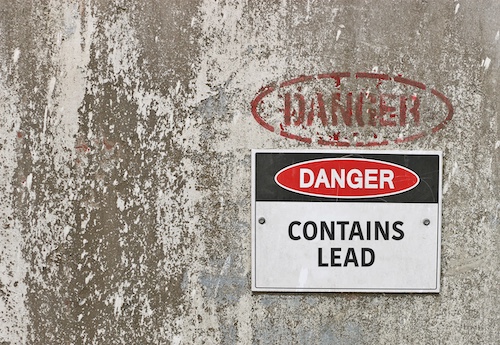Occupational Diseases in North Carolina: Understanding Your Rights to Compensation
Occupational diseases affect many workers who face daily exposure to hazardous materials, repetitive motions, or unsafe workplace conditions. These illnesses often develop gradually, making it difficult to connect the symptoms to the job. Under North Carolina law, employees who suffer from conditions caused by occupational exposure may qualify for benefits through the state’s workers’ compensation system.
Working with an experienced Charlotte workers’ compensation lawyer helps ensure the claim is filed correctly, supported by strong medical evidence, and handled within the required legal deadlines.
What Counts as an Occupational Disease in North Carolina?
Occupational diseases develop from repeated exposure to harmful conditions in the workplace. They differ from sudden work injuries and often involve long-term occupational exposure or repetitive motion.
Legal Definition under North Carolina Law
Under N.C.G.S. § 97-53(13), an occupational disease is one that is characteristic of a particular trade or employment and not an ordinary disease of life to which the general population is equally exposed. The law covers both listed and unlisted diseases if the worker’s job created a greater risk than that faced by the general public.
Listed Occupational Diseases
The statute lists certain diseases such as lead poisoning, mercury poisoning, chromium ulceration, and compressed-air illness. These are recognized as occupational diseases when caused by specific workplace exposures or industrial processes.
Unlisted Occupational Diseases
Workers can also claim compensation for diseases not listed in the statute. To qualify, they must prove the illness is linked to their occupation and that their job exposed them to a greater hazard than other worker populations. Conditions like occupational asthma, carpal tunnel syndrome, musculoskeletal disorders, and occupational skin diseases often fall under this category.
Common Occupational Exposures
Occupational exposure can involve contact with chemical agents, coal dust, metal particles, or biological agents. Factory workers, construction workers, healthcare workers, and agricultural workers face increased risk factors for occupational disorders and work-related diseases.
Health Surveillance and Medical Evidence
Medical surveillance and occupational medicine play a key role in diagnosing such diseases. Workers should document symptoms, exposure levels, and medical evaluations from specialists in occupational and environmental medicine to establish a clear causal relationship.
Importance of Occupational Safety
Preventive measures, personal protective equipment, and adherence to occupational safety standards help reduce health hazards. Employers must protect workers from known risks and report any recognized occupational illnesses to the North Carolina Industrial Commission.
Why Filing an Occupational Disease Claim Is Different
Filing a claim for occupational diseases in North Carolina involves unique rules and proof requirements compared to typical workplace injury claims. The process depends on medical evidence, exposure history, and statutory definitions.
Gradual Onset and Hidden Symptoms
Unlike sudden workplace accidents, occupational diseases often develop slowly. Workers may not notice early signs of respiratory disease, skin diseases, or musculoskeletal disorders until months or years after exposure. Prolonged contact with chemical agents, coal dust, or biological agents can lead to delayed symptoms such as difficulty breathing, chronic irritation, or joint pain.
Legal Classification under North Carolina Law
Under N.C.G.S. § 97-52, disablement or death resulting from an occupational disease listed in § 97-53 is treated as an “injury by accident” for compensation purposes. The worker must show a connection between the disease and their occupation. Employment does not need to be the sole cause, but it must be a significant contributing factor.
Proving Causation and Increased Risk
Causation is harder to establish in occupational disease cases. The worker must demonstrate that their job created a greater risk than that of the general population. For unlisted diseases like carpal tunnel syndrome or occupational asthma, medical evidence from occupational medicine or environmental medicine specialists helps show the causal relationship between workplace exposures and illness.
Role of Medical and Workplace Evidence
Evidence often includes medical records, biological monitoring, and industrial hygiene reports. These records show exposure levels and health surveillance results. Expert evaluations are essential to prove that workplace hazards directly caused or worsened the disease.
Importance of Timely Reporting
Because symptoms may appear years later, identifying the date of diagnosis or disablement is critical. Under N.C.G.S. § 97-58, workers must file claims within two years of learning their disease is work-related. Early medical consultation and proper notice to the employer protect eligibility for workers’ compensation benefits.
Value of Legal Guidance
A Charlotte workers’ compensation attorney can gather medical proof, confirm exposure timelines, and manage the filing process. Occupational disease claims demand careful coordination of evidence, deadlines, and expert input to secure fair compensation.
Step-by-Step: Filing a Claim for Occupational Diseases in North Carolina
Filing a claim for occupational diseases in North Carolina follows a structured legal process. Each step requires documentation, timely action, and medical support to confirm the link between workplace exposures and illness.
Step 1: Recognize Symptoms and Seek Medical Evaluation
Workers should act once they notice signs of occupational illness such as respiratory symptoms, skin irritation, or musculoskeletal pain. A qualified physician must diagnose the condition and determine whether it is related to occupational exposure. Medical specialists in occupational and environmental medicine can assess workplace hazards and document the causal relationship.
Step 2: Notify the Employer
Under N.C.G.S. § 97-22, written notice must be given to the employer within 30 days of learning that the disease is work-related. The notice should include the diagnosis, symptoms, and how workplace conditions contributed to the disease. Keeping a copy of the written notice helps verify compliance with the law.
Step 3: File a Claim with the North Carolina Industrial Commission
The worker must complete and file Form 18 (Notice of Accident to Employer and Claim of Employee) with the North Carolina Industrial Commission (NCIC). The employer must then file Form 19 (Employer’s Report of Injury) within five days of receiving notice. Filing the proper forms ensures the claim enters the NCIC system for review.
Step 4: Observe Filing Deadlines
Under N.C.G.S. § 97-58(c), claims for occupational diseases must be filed within two years from the date a doctor confirms the disease is related to work or from the date of disablement. Missing this deadline can result in loss of benefits, even if the worker has strong medical evidence. Timely action is essential to protect compensation rights.
Step 5: Gather Supporting Evidence
Workers should collect medical reports, exposure records, and workplace safety data. Evidence may include industrial hygiene testing results, biological monitoring, and records of personal protective equipment use. These materials help prove the disease was caused by specific occupational exposures or hazards.
Step 6: Respond to Employer or Insurance Actions
After the claim is filed, the employer or insurance carrier may accept or deny the claim. If denied, the worker can request mediation or a formal hearing with the NCIC. Legal representation by a Charlotte workers’ compensation lawyer can help present medical findings, witness statements, and expert opinions during hearings.
Step 7: Receive Benefits and Continue Medical Care
If approved, the worker may receive workers’ compensation benefits for medical expenses, lost wages, and disability. Continued medical surveillance ensures that the condition is managed and that exposure sources are identified to protect other worker populations from similar occupational hazards.
Consult With an Experienced Charlotte Workers’ Compensation Attorney ASAP!
If you believe your health problems are connected to workplace exposures, do not wait to take action. The longer you delay, the harder it becomes to prove your case. Our team at 1Charlotte Personal Injury Lawyers has extensive experience handling occupational disease and workers’ compensation claims across North Carolina. A skilled Charlotte workers’ compensation attorney from our firm can guide you through every step, from gathering medical records to presenting your claim before the Industrial Commission.
Contact us at (704) 706-2689 for a free claim review today!







